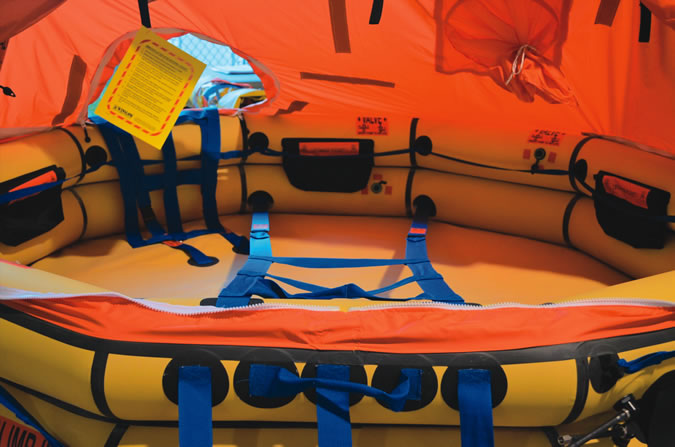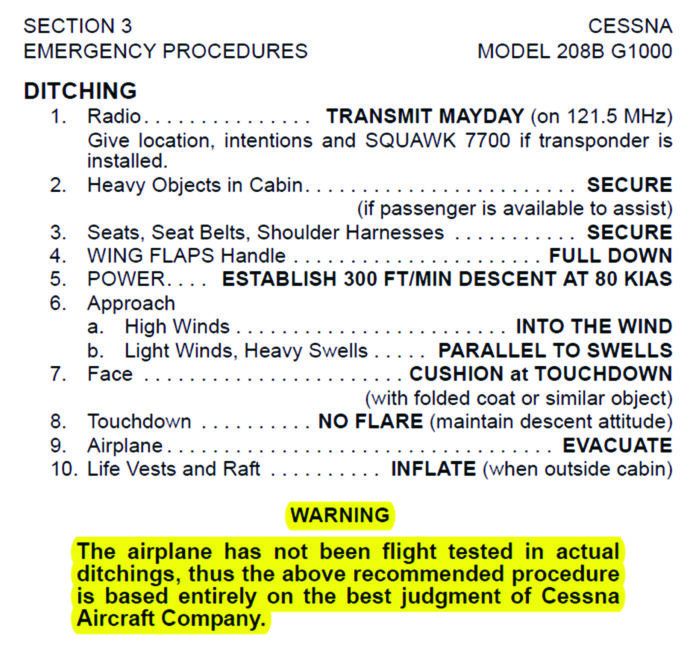All kinds of advice is available from the FAA, manufacturers and other sources on how to ditch an airplane. In fact, the how is fairly easy—it can be summed up as “land in the water.” The checklist excerpt at right, for a Cessna Model 208B Grand Caravan, discusses the major items. (We added the highlighting noting Cessna hasn’t test-ditched a Caravan.)

Preparation can be critical, however. Here are some additional tips, focused on passengers, adapted from the U.S. Department of the Interior (yes!) and its Office of Aircraft Services (DOI/OAS):
Remove Loose Items, Including Eyeglasses
This should be self-explanatory: The sometimes-sudden deceleration of a ditching can turn loose items into projectiles. When attempting to egress the aircraft, they can catch on other items.
Unplug Helmets/Headsets
You probably won’t be wearing a helmet, but headsets are commonplace. Unplug their cables prior to ditching to help prevent them from wrapping around something important, like your leg, and preventing egress. Just as with other loose items, secure them before impact.

Open Doors
Depending on the aircraft, opening doors prior to splashdown usually is advised. The key is airframe damage or water pressure may prevent opening a closed door once the aircraft is in the water. Yes, an open door will allow water to fill the cabin more quickly, but if the door won’t open after the ditching, you’ve got other problems.
Don’t Panic
Above all, don’t panic. According to the DOI/OAS, “The best way to reduce disorientation, confusion, the effects of inward rushing water, incapacitating injuries and the accompanying panic is to remain securely trapped in your seat and to establish a reference point [a door jamb or window].” Remain your seat until the aircraft and propellers/rotors have stopped, then “unstrap and exit, following the hand used to maintain a reference point.




